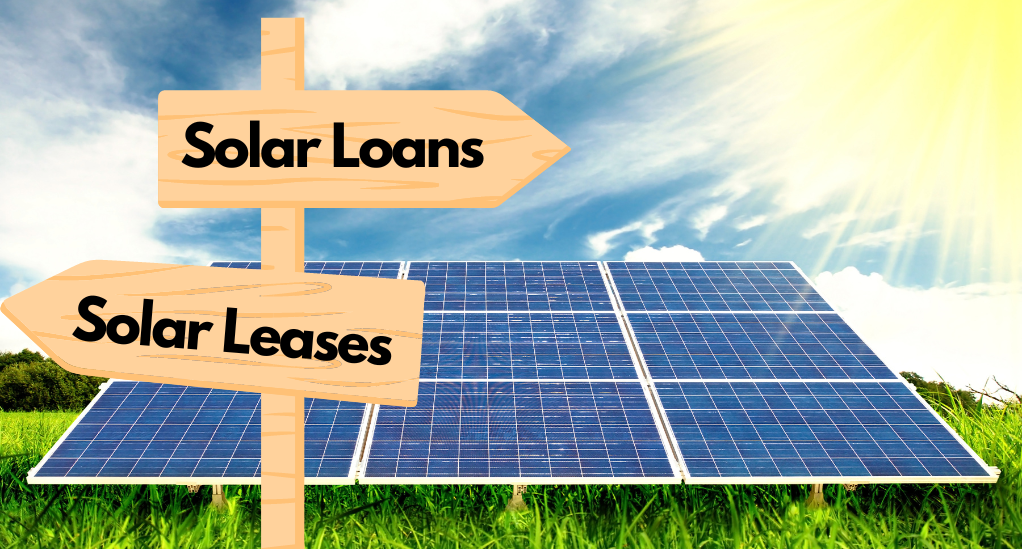The transition to renewable energy sources is not just a trend but a necessary shift to mitigate the adverse effects of climate change and reduce dependency on non-renewable resources. As more individuals consider harnessing the power of the sun to fuel their homes, understanding the financial avenues available becomes crucial. In this guide, we delve deep into the intricacies of solar loans and solar leases, helping you navigate through solar loan interest rates, solar financing rates, and much more. Let’s embark on this journey to making a well-informed decision for a brighter, greener future.
The Rise of Solar Energy Adoption
In recent years, the adoption of solar energy has seen a significant uptick globally. Homeowners are increasingly recognizing the environmental benefits and the long-term cost savings associated with solar power. Governments around the world are also encouraging this shift through various incentives and programs. As a prospective solar energy user, it’s essential to understand the different financing options available to make an informed decision that aligns with your financial goals and sustainability values.
Importance of Understanding Financing Options
When it comes to financing a solar power system, the two primary options available are solar loans and solar leases. Each comes with its set of advantages and drawbacks. Understanding the nuances of these options, including aspects like solar loan interest rates and solar financing rates, can significantly influence your overall solar experience.
Understanding Solar Financing
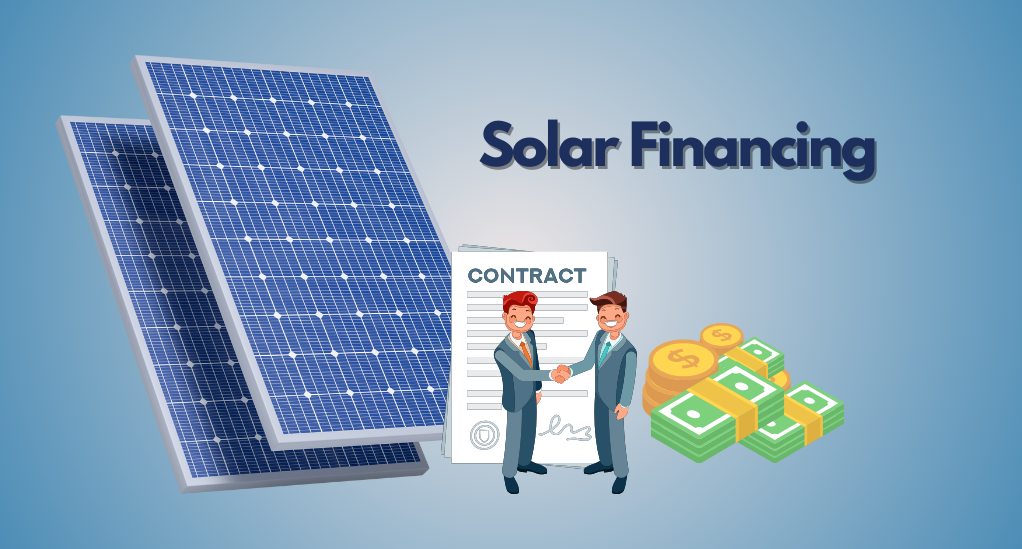
Embarking on the journey to solar energy adoption involves making critical decisions regarding financing. This section aims to provide a foundational understanding of the two primary financing options available: solar loans and solar leases. Let’s dissect each term and understand their implications in the broader spectrum of solar financing.
Definition of Solar Loans and Solar Leases
Solar Loans
A solar loan is a financing option that allows you to borrow the necessary funds to install a solar power system in your home. Similar to other types of loans, you are required to pay back the principal amount along with a certain interest rate, which is often referred to as the solar loan interest rate. The repayment period and interest rates can vary, and it’s essential to shop around to find the best solar loan rates available in the market.
Solar Leases
On the other hand, a solar lease is a financial agreement where a third party owns the solar power system installed in your home. You pay a fixed monthly fee to lease the equipment, which allows you to use the energy generated by the system. The leasing company is responsible for the maintenance and repairs of the system throughout the lease period.
Importance of Researching Solar Panel Loan Rates
Before committing to a financing option, it’s crucial to conduct thorough research into the prevailing solar panel loan rates. These rates can significantly influence the overall cost of your solar installation. Here are a few aspects to consider:
- Comparative Analysis: Create a comparison table that lists various lenders along with their respective interest rates, terms, and conditions. This will help you identify the most favorable options.
- Credit Score Impact: Understand how your credit score can influence the interest rates offered by lenders. Generally, a higher credit score can secure lower interest rates.
- Government Programs and Incentives: Explore government programs that might offer loans at subsidized rates. These programs are designed to encourage more homeowners to adopt solar energy.
- Consultation with Financial Advisors: If necessary, consult with financial advisors to understand the nuances of solar financing rates and to develop a financial plan that aligns with your goals.
Solar Loans: A Deep Dive
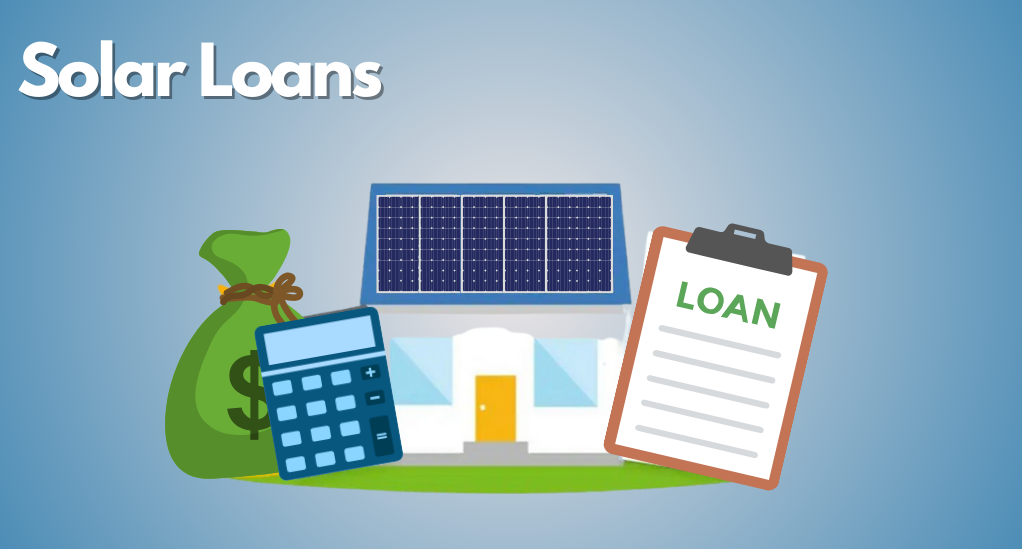
In this section, we will explore the world of solar loans in detail, helping you understand the nuances that come with this financing option. From understanding how they work to figuring out how to secure the best rates, we’ve got you covered.
How Solar Loans Work
Solar loans function similarly to other types of loans where you borrow a specific amount of money and repay it over a predetermined period, along with interest. The funds acquired through a solar loan are used to cover the costs associated with installing a solar power system in your home. Here, we will break down the various aspects that govern solar loans:
- Principal Amount: The initial amount borrowed to finance the solar power system.
- Interest Rates: The solar loan interest rates are a critical aspect to consider as they determine the overall cost of the loan. These rates can vary based on several factors, including the lender’s policies and your credit score.
- Repayment Period: The time frame within which you are required to repay the loan. It can range from a few years to a couple of decades, depending on the terms agreed upon with the lender.
Pros and Cons of Solar Loans
Before you decide to opt for a solar loan, it’s essential to weigh the pros and cons associated with this financing option. Here, we present a balanced view to assist you in making an informed decision:
Pros
- Ownership: You own the solar power system from day one, allowing you to reap the benefits of any government incentives and rebates.
- Increased Property Value: Installing a solar power system can potentially increase the value of your property.
- Energy Savings: Over time, the savings on your electricity bills can offset the cost of the loan.
Cons
- Interest Payments: You are required to pay interest on the loan, which can add to the overall cost of the solar power system.
- Credit Score Dependency: Your credit score plays a significant role in determining the solar panel loan rates you are offered.
- Potential Liens: In some cases, lenders may place a lien on your property until the loan is fully repaid.
Understanding Solar Loan Interest Rates
Solar loan interest rates can vary significantly between lenders. It’s crucial to understand the factors that influence these rates to secure the best solar loan rates. Here, we will explore various elements that dictate interest rates and offer tips on how to navigate this landscape effectively:
- Market Trends: Keep an eye on the prevailing market trends, as interest rates can fluctuate based on economic conditions.
- Credit Score: As mentioned earlier, a higher credit score can potentially secure lower interest rates.
- Loan Term: The length of the loan term can influence the interest rate. Generally, shorter loan terms might offer lower interest rates compared to longer terms.
Tips to Secure the Best Solar Loan Rates
Securing the best solar loan rates requires a strategic approach. Here, we offer some tips to help you navigate this process effectively:
- Research and Comparison: Conduct thorough research and compare offers from various lenders to identify the most favorable rates.
- Government Programs: Explore government programs that offer loans at subsidized rates to encourage solar energy adoption.
- Financial Consultation: Consider consulting with a financial advisor to develop a strategy that aligns with your financial goals and circumstances.
Solar Leases: A Detailed Analysis
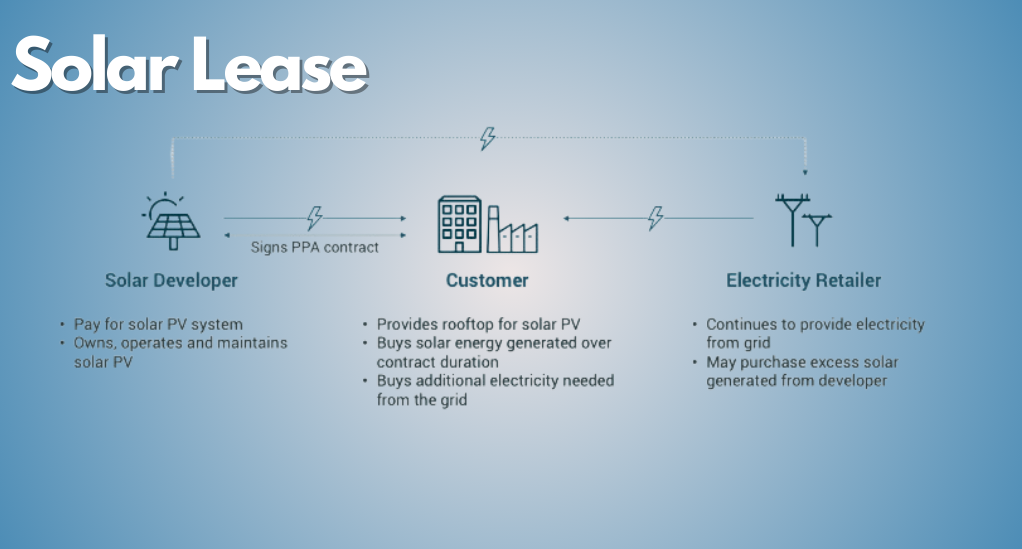
As we continue our journey in understanding the financial pathways to solar energy adoption, it’s time to shift our focus to solar leases. This section aims to provide you with a detailed analysis of solar leases, helping you gauge whether this option aligns with your financial and environmental objectives.
How Solar Leases Work
Solar leases represent a different approach to solar financing compared to loans. In a solar lease agreement, you do not own the solar power system installed on your property. Instead, a third-party company retains ownership and takes responsibility for the maintenance and repairs of the system throughout the lease period. Here, we dissect the various components that govern solar leases:
- Lease Agreement: A contractual agreement where you agree to lease the solar power system from a third-party owner for a specified period, usually ranging from 15 to 20 years.
- Monthly Lease Payments: You are required to make fixed monthly payments to the leasing company, which allows you to use the energy generated by the system.
- Maintenance and Repairs: The leasing company undertakes the responsibility of maintaining and repairing the system, ensuring its optimal performance throughout the lease period.
Pros and Cons of Solar Leases
Just like with solar loans, it’s vital to consider the pros and cons associated with solar leases to make an informed decision. Here, we present a balanced perspective:
Pros
- No Upfront Costs: Solar leases often require no upfront costs, making it easier to adopt solar energy without a significant initial investment.
- Maintenance and Repairs: The leasing company handles the maintenance and repairs, relieving you of these responsibilities.
- Easy Entry into Solar Energy: Solar leases provide an easy pathway to start utilizing solar energy without the complexities of system ownership.
Cons
- No Ownership: You do not own the solar power system, which means you cannot avail of government incentives and rebates that are available to system owners.
- Potential Transfer Issues: Transferring the lease agreement to a new homeowner can be complex if you decide to sell your property during the lease period.
- Long-Term Commitment: Solar leases require a long-term commitment, often extending up to 20 years, which might not suit everyone’s financial plans.
Financial Implications of Solar Leases
Understanding the financial implications of solar leases is crucial to gauge whether this option aligns with your financial goals. Here, we delve into the various financial aspects associated with solar leases:
- Monthly Lease Payments: Analyze the cumulative cost of the monthly lease payments over the lease period to understand the total financial commitment.
- Comparison with Solar Loans: Conduct a comparative analysis with solar loans, considering aspects like solar financing rates, to determine which option offers better financial benefits in the long run.
- End-of-Lease Options: Explore the options available at the end of the lease period, including the possibility of purchasing the system, renewing the lease, or having the system removed.
Comparative Analysis: Loans vs. Leases
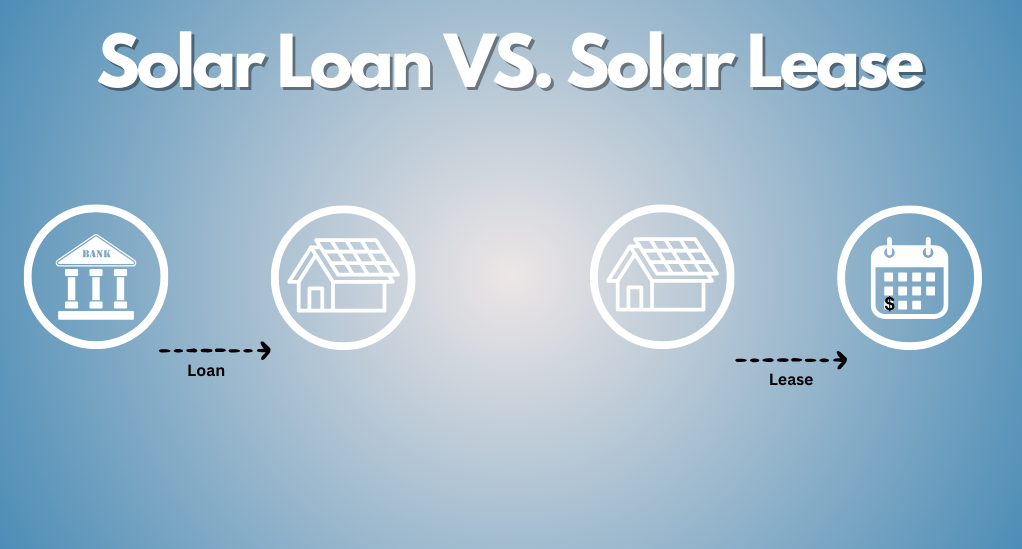
As we venture further into the realm of solar financing, it becomes imperative to conduct a comparative analysis between solar loans and leases. This section aims to provide you with a detailed comparison, supplemented with real-life scenarios and case studies, to help you gauge the best route for your solar installation journey.
Ownership and Responsibilities
One of the fundamental differences between solar loans and leases lies in the ownership of the solar power system. Let’s delve into the implications of ownership and the responsibilities that come with each financing option:
Solar Loans
- Ownership: You own the system from day one.
- Responsibilities: You are responsible for the maintenance and repairs of the system, although many installers offer warranties that cover several years.
- Benefits: You can avail of government incentives and rebates, and potentially increase the value of your property.
Solar Leases
- Ownership: The system is owned by a third-party company.
- Responsibilities: The leasing company takes care of maintenance and repairs.
- Benefits: You can start using solar energy without a significant initial investment and without worrying about maintenance.
Financial Comparison: Solar Financing Rates Analyzed
Understanding the financial nuances of each option is crucial. Here, we analyze the solar financing rates associated with both options, helping you understand the long-term financial implications:
- Solar Loan Interest Rates: Explore the various factors that influence solar loan interest rates and how to secure the best rates.
- Solar Lease Rates: Understand the structure of solar lease payments and how they are determined.
- Cost-Benefit Analysis: Conduct a cost-benefit analysis to gauge the financial benefits and drawbacks of each option over the long term.
Government Initiatives and Programs
As we navigate the complex landscape of solar financing, it is essential to explore the various government initiatives and programs that can facilitate a smoother transition to solar energy. These programs are designed to encourage more homeowners to adopt solar energy by offering financial incentives and support. In this section, we will delve into the prominent programs and how you can leverage them for a successful solar installation journey.
Federal Incentives and Rebates
The federal government offers a range of incentives and rebates to promote the adoption of solar energy. Here, we explore some of the key programs that you might consider:
- Federal Investment Tax Credit (ITC): This program allows homeowners to deduct a percentage of the cost of installing a solar power system from their federal taxes.
- USDA Rural Energy for America Program (REAP): This program provides financial assistance to rural small businesses and agricultural producers to undertake renewable energy projects, including solar installations.
- Department of Energy (DOE) Initiatives: The DOE offers various initiatives that promote solar energy adoption, including grants, loans, and technical assistance.
Local Government Solar Financing Programs
Apart from federal programs, many local governments offer initiatives to support solar energy adoption. These programs can vary significantly between regions, and it’s essential to research the options available in your locality. Here are some common types of programs:
- Property Assessed Clean Energy (PACE): PACE programs allow homeowners to finance solar installations through an assessment on their property tax bill, spreading the cost over several years.
- State Tax Credits: Many states offer tax credits to homeowners who install solar power systems, helping to reduce the overall cost of installation.
- Net Metering: This program allows homeowners to sell excess energy generated by their solar power system back to the grid, potentially offsetting the cost of their energy bills.
How to Leverage Government Programs for Better Rates
To make the most of these government programs, here are some steps you can take:
- Research: Conduct thorough research to understand the various programs available at both the federal and local levels.
- Consultation: Consider consulting with a solar installation company or a financial advisor to understand how to best leverage these programs.
- Application Process: Understand the application process for each program and ensure to comply with all the requirements to avail of the benefits.
- Combining Programs: Explore the possibility of combining different programs to maximize the financial incentives available for your solar installation.
Conclusion
Embarking on the journey to solar energy adoption is a significant step towards fostering a sustainable and eco-friendly future. As you navigate this path, you are met with pivotal decisions, primarily centered around financing options: solar loans and solar leases. Each option presents its unique set of benefits and challenges. Solar loans pave the way for ownership and potential property value increase, coupled with the opportunity to avail of government incentives. Conversely, solar leases offer a hassle-free entry into the solar energy sphere, devoid of the responsibilities that come with system ownership and maintenance.
As you stand on the cusp of this important decision, it is imperative to meticulously assess your financial landscape and align it with your long-term goals. Keeping abreast of the evolving trends in solar financing and government initiatives can equip you with the knowledge to make informed choices. Moreover, consulting with experts in the field can provide nuanced insights, guiding your steps in this renewable energy journey. As we anticipate a future adorned with innovative financing solutions, we invite you to be a part of this green revolution, steering towards a world illuminated by the clean and boundless energy of the sun.

